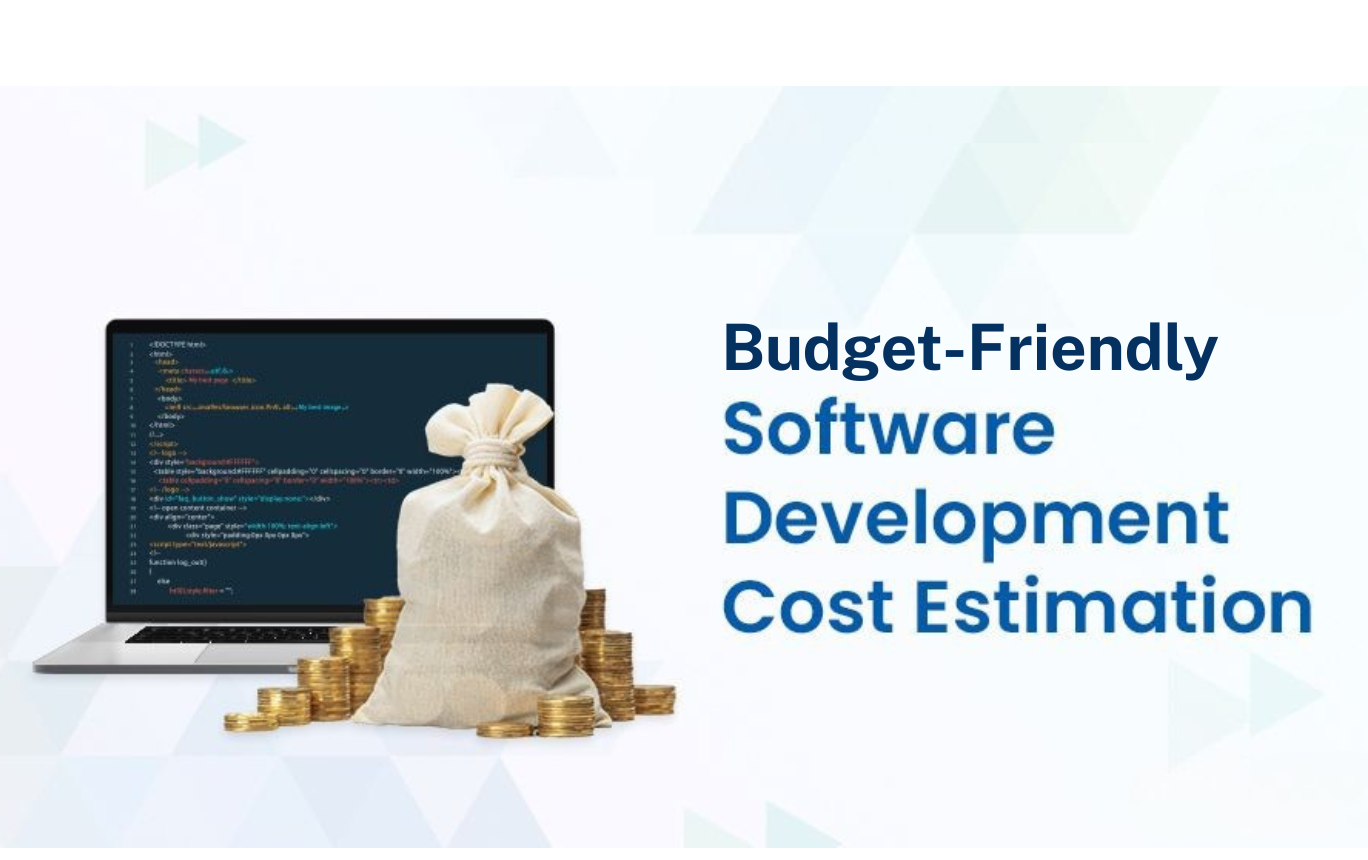
A Practical Guide for Startups and Growing Businesses
If you’re wondering, “Can I build quality software on a small budget?”
Do you have a powerful product idea but only a limited budget to bring it to life?
You’re not alone. Thousands of startups face this very challenge, how to build meaningful software without draining precious funds. According to a 2024 report from Failory, over 38% of startups fail because they run out of money. Often, the issue isn’t just lack of capital; it’s lack of clarity about what to build first, and what can wait.
Maybe you’re asking:
Creating software on a budget calls for strategic planning, smart prioritization, and the use of cost-effective methods. By concentrating on a Minimum Viable Product (MVP), using low-code or no-code platforms, and outsourcing certain tasks, you can cut costs significantly while still delivering the functionality you need.
At iOSS, we’ve worked with countless early-stage businesses to transform lean budgets into solid, scalable products. Whether bootstrapped or pre-seed funded, these startups succeeded not because they built everything, but because they built the right things, in the right order.
This guide is your roadmap. We’ll break down:
By the end, you’ll know how to prioritize with confidence, cut unnecessary development costs, and build a product that’s lean but launch-ready.

One of the biggest myths in tech is that quality comes only with a big budget. But smart planning often beats big spending.
The key? Clarity of purpose and strategic restraint.
Over-engineering features users don’t need
Building dashboards no one uses
Integrating tools just because competitors do
Designing interfaces for aesthetics, not usability
Writing code with no scalability plan
Validate your product in the market quickly
Gather feedback early
Scale smart; based on real needs, not assumptions
These are the foundational elements every lean startup should focus on things that directly support user outcomes, system stability, and future scalability.
Start by identifying the non-negotiable functionalities your users need to solve their primary problem. Everything else is noise; for now.
Example: If you’re building a fitness coaching platform, core features might include:
You don’t need goal tracking, nutrition logs, or progress charts on day one.
Avoid “feature creep.” Keep your scope focused. The goal is not to be complete, it’s to be valuable and usable from day one.
Users don’t come back because your app has cool animations; they return because it’s easy to use and solves their problem.
Focus on:
Use established design systems like Google’s Material Design or Bootstrap to reduce design and front-end development time.
Avoid building a “quick and dirty” solution that will require a total rewrite later.
Even on a tight budget, invest in:
This doesn’t mean over-engineering. It means building with growth in mind, so future iterations are smooth and affordable.
Even the most basic app handles sensitive data — emails, passwords, sometimes payment info. Don’t cut corners here.
Start with:
Skipping security early on often leads to costly legal issues, compliance failures, or user trust erosion later.
Your backend is your engine. It needs to:
If your app crashes or lags — even if it looks pretty — it won’t retain users. Backend-first thinking ensures performance, reliability, and long-term stability.
Just because something looks impressive doesn’t mean it’s essential especially in early development. The reality is, most successful products launch with less than what you see today. The trick is knowing what can wait without impacting your product’s usability, reliability, or ability to gain traction.
Here are a few features that are often overbuilt too early, and why it’s smarter to delay them:
While having an admin dashboard is useful for internal operations, you don’t need a robust, multi-role admin suite from day one. Early-stage teams often spend valuable time and money creating admin interfaces that aren’t yet necessary.
As your operations grow and your team expands, you’ll begin to see exactly what tools and dashboards are actually needed based on real workflows. At that point, investing in a more structured admin panel makes financial and functional sense.
It’s tempting to plug in every tool under the sun, from marketing platforms to CRMs and automation services. But each integration adds complexity, cost, and maintenance overhead, especially when you’re still validating your core product.
Each additional tool means more time spent on configuration, testing, and support. These can be layered in once there’s a solid base product and user feedback to justify them.
Yes, they look great. Yes, they add a level of finesse. But smooth animations and UI micro-interactions are the icing not the cake.
They rarely influence early adoption or product-market fit. And in most cases, your early users are more interested in whether your app solves a pain point, not how a button glows on hover.
Once your users are actively using the app, you’ll get feedback on which parts of the experience could be improved visually and then, polished interactions will actually make sense.
Every startup wants data. But data is only useful when you know what questions you’re trying to answer and that usually becomes clear after launch, not before it.
In early stages, building a full-scale reporting engine with filters, role-based access, and exportable dashboards is often premature and expensive.
A limited budget shouldn’t limit your potential. The key is to be strategic, building only what’s essential, validating fast, and scaling wisely. Here’s how to do it:

Before writing a single line of code, take time to understand your goals, users, and core problem. Discovery workshops or planning sessions help you define what matters most, so you avoid building features no one needs.

Don’t aim for a full-fledged platform from day one. Instead, launch a focused MVP (Minimum Viable Product), test it with real users, gather feedback, and expand gradually. This reduces risk and ensures you’re investing in what works.

Choose a partner who offers transparent, detailed costing. Know what you’re paying for and when, so you can make smart trade-offs without sacrificing long-term value.

You don’t need a large team, you need the right one. Lean teams with versatile skills can design, build, and iterate quickly, saving both time and money.

By staying focused, prioritizing user value, and working with the right strategy and team, you can build something great without overspending.
Delaying these features isn’t about cutting corners, it’s about building with purpose. In the early stages, your focus should be on:

Proving product value

Solving the primary user problem

Achieving early traction and feedback

Preserving capital for what truly moves the business forward
Once you hit those initial milestones, you’ll be in a much stronger position to expand your feature set strategically, with clarity about what will actually enhance your product experience or improve internal efficiency.
A tight budget doesn’t mean you have to compromise on quality, it means you need clarity and strategy. By focusing on what truly matters; core features, usability, backend stability, and security, you can create a lean, effective product that’s ready for real-world validation. The goal isn’t to build everything. It’s to build the right things first. With the right priorities and a thoughtful approach, you can launch confidently, scale wisely, and make every rupee count.
Yes, and many startups do it successfully. A smaller budget forces clarity, prioritization, and disciplined execution. If you focus on solving one core problem well, avoid overbuilding, and work with a partner experienced in lean development, you can absolutely launch a stable, well-performing product without needing enterprise-level capital.
It depends on your feature scope, complexity, and technology stack. That said, a typical MVP can range from ₹8–₹20 lakhs (around $10,000–$25,000 USD). Keeping the scope tightly focused on core functionality helps reduce both development time and cost, without affecting usability.
A lean MVP can usually be developed in 6 to 12 weeks, depending on the complexity of the solution. This includes design, development, testing, and basic deployment. Using Agile sprints and fast feedback loops keeps progress steady without long delays.
Change is expected and manageable. Our Agile-based process is designed to accommodate evolving needs. We work in short, iterative sprints, allowing for flexibility and scope adjustments without derailing the entire project or causing major rework.
Not necessarily. Most early-stage products start with lightweight internal tools enough to manage users, view activity, and perform basic operations. Full-featured dashboards can be added after you’ve validated your product and team needs.
Yes. Early users care more about functionality and ease of use than fancy transitions or visual effects. Prioritize a clean, intuitive layout that works well on all devices. You can always invest in advanced UI/UX elements once you gain traction.
Never skip the essentials:
These form the backbone of your product and directly impact user trust and retention. Cutting corners here can lead to costly problems later.
Work with a development partner who helps you:
Cost overruns usually happen due to poor planning or unclear priorities both of which we help you avoid from the start.
Absolutely. We offer discovery workshops to help you:
This phase saves time and money later by ensuring everyone is aligned before development begins.
While we don’t directly provide funding, we support early-stage founders by: